India’s rich royal history is filled with charismatic personas, and Maharani Gayatri Devi Jaipur stands out as a true icon. Maharani Gayatri Devi was very popular among the elite circles. Her life transcended the glamorous world of page three people, palaces and polo matches. She was a fashion trendsetter, a political leader, a proponent of social causes and was the face of Jaipur. Maharani Gayatri Devi’s love for cars, horses, and polo games is well-established. People still remember her magnetic persona even though she died one and a half decades ago. In Jaipur she was called “Rajmata.” This Maharani Gayatri Devi blog is a treat for history and Jaipur lovers. Why? it has many Maharani Gayatri Devi old pictures, out of which a few are not easy to find.
The autobiography of Maharani Gayatri Devi, “The Princess Remembers” is one of the best autobiographies I have ever read. I like the fluidity of the words and how it conjures up images in the mind as one moves from page to page. And it is on the last pages that it really strikes the chords of every person who loves the built Jaipur heritage. I have already written on this subject in my blog Why do we need to conserve Jaipur heritage? Even though the book was written close to 30 years ago, it is befitting even more today.
” Many pleasures in life carry on but I feel sad at the deterioration of the city of Jaipur and its surroundings. I think about the time when it was immaculately maintained. In the 18th century when Maharaja Sawai Jai Singh moved his capital from Amber to Jaipur, he commissioned Vidyadhar Bhattacharya, the best architect and town planner of that time. Vidyadhar Bhattacharya built a walled city of unparalleled beauty. It had broad roads, perfect symmetry, and civic sense for the inhabitants. Each successive ruler enhanced the city by employing the best talent available. Jai was the last of these rulers. He expanded the capital beyond the city walls — the hospitals, schools, colleges, the University, the Secretariat, and the residential colonies were all built during his reign. He is acknowledged as the founder of modern Jaipur. Great- care was taken in the expansion and modernization of Jaipur to harmonize with the walled city, Nothing was allowed to spoil the beauty of Jaipur, which is today a noisy, dirty, overcrowded metropolis. I realize that the population has risen from 300,000 people in 1950 to almost one and a half million in 1994.
Similarly, there are no rules or strictures within the walled city. Every open space is built upon. There are no restrictions on the style or height of buildings and Jaipur is fast losing its unique character. Even the gracious and grand courtyards of the City Palace have been allowed to become bazaars. No one seems to care. One cannot blame the politicians, who have no interest in the future but are just concerned about how they can profit during their tenure. And the officials who serve them seem to know no better. These time servers have no thought for posterity. I think about Rajaji’s warning to Jai to look after his heritage. “These people do not understand,” he said, “that these monuments should be preserved for posterity. They will turn them into shops and offices.” How right he was! I have at times tried to intervene but today’s rulers do not have a vestige of aesthetic sense.”
If you were to explore the walled city of Jaipur and its lanes, you can understand why Gayatri Devi felt this way.
Read: The Walled City of Jaipur
The Story of Maharani Gayatri Devi of Jaipur | princess to politician
Gayatri Devi Lineage
If you have never heard of Maharani Gayatri Devi and you are wondering who she was, read on. Gayatri Devi was the princess of Cooch Bihar state during the pre-independence period.
Gayatri Devi Husband
She became queen of Jaipur after marrying the last king of Jaipur. Her husband’s name was Sawai Man Singh II.
Admiration & Popularity of Gayatri Devi
The last Maharaja and Maharani of Jaipur were at the center stage among the Indian princely states. For years, Gayatri Devi and Sawai Man Singh were synonymous with glamour, magnificent palaces, and larger-than-life personas & lifestyle. Many even consider their love story to be iconic; they were the most idolized duo. Maharani Gayatri Devi was considered to be one of the most beautiful women in the world as per Vogue magazine. Khushwant Singh, one of India’s most noted news reporters and editors, wrote these lines for Gayatri Devi.
“In my long life, I have had the good fortune of meeting many beautiful women, ranging from film stars such as Ingrid Bergman to a few Bollywood celebrities, including Nargis, Parveen Babi and a host of others whose names now escape me. However, if asked whom I thought to be the most beautiful of the lot, without hesitation I would reply Gayatri Devi of Cooch Behar, Rajmata of Jaipur.”
Gayatri Devi was the last Maharani or the queen of Jaipur. Her nickname was Ayesha; Sawai Man Singh’s Jai. The journey from “Her Highness Princess Gayatri Devi of Cooch Behar” to “Her Highness Rajmata of Jaipur” is compiled in a book, The Princess Remembers.
Mother & early Life of Gayatri Devi
Gayatri Devi was born on 23 May 1919 in London. Her father Jitendra Narayan was a prince of Cooch Behar, and later became the ruler of this state. Her mother, Indra Devi, was the daughter of the Maratha ruler of the state of Baroda Sayajirao Gaekwad III. Indra Devi is best remembered as a well-known socialite and a beautiful woman. She explained in her book how her mother went into the minutest details. In her life and personality, the influence of Indra Devi and Gaekwads was tremendous.
Life with husband Sawai Man Singh
Maharani Gayatri Devi first met Sawai Man Singh II in 1931 in Kolkata when the latter arrived to play polo with his team and stayed with her family. Their fairy tale wedding took place in May 1940 in Cooch Bihar. She became Sawai Man Singh’s third wife and, as per popular belief, the favourite. His first marriage took place when he was a minor. Unlike her predecessors, she was extremely fashionable and did not observe purdah; possibly because she was educated in the liberal atmosphere of Europe and influence of her mother, Indira Devi. She studied at Glendower Preparatory School London, Visva-Bharati University Shantiniketan and London School of Secretaries. Like her husband, she also loved cars and horses; naturally, driving and horse riding brought her joy.
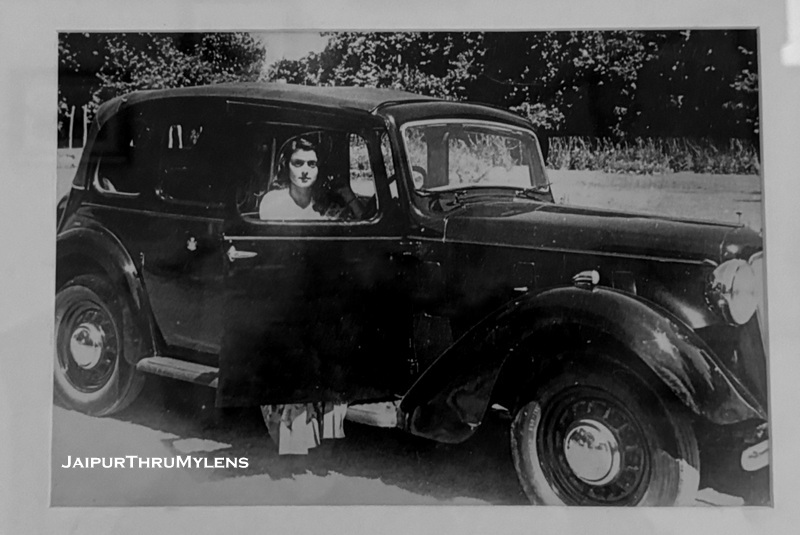
Political career
Gayatri Devi’s opposition to the Congress Party’s policies led her to align with the Swatantara Party under C. Rajagopalachari. She contested the election and became a member of Lok Sabha. Later in her life there were a series of tragedies: the death of Sawai Man Singh II, her husband in 1970 in England, and her imprisonment ordered by Indira Gandhi in 1975 under Emergency rule. An amendment bill to end the privy purses of the erstwhile rulers also caused significant problems. Later, she decided not to join politics.
Indira Gandhi, Sanjay Gandhi, and Emergency
A lot of inquisitiveness revolves around Gayatri Devi and Indira Gandhi. Apparently, they did not get along well. The popular opinion is this dislike stems from their school days at Santiniketan, near Kolkatta, where both studied and that Indira Gandhi was jealous of Gayatri Devi’s beauty.
Khushwant Singh, editor of a leading newspaper, wrote the following:
“When Indira Gandhi imposed Emergency, among those she put into prison were Gayatri Devi and Rajmata Scindia of Gwalior. Their places were searched. Nothing incriminating was found. Nevertheless, both were kept in jail alongside prostitutes and pickpockets. Indira Gandhi had a streak of vindictiveness towards good-looking women of the aristocracy.”
In his writings, Khushwant Singh attacked Indira Gandhi for imprisoning Maharani during the Emergency. He wrote that Gayatri Devi brought out the worst in Indira Gandhi; her petty vindictive side. Indira could not stomach a woman more good looking than herself, and insulted her in parliament calling her a bitch and a glass doll. When Gayatri Devi called Indira Gandhi to offer her condolences on her son Sanjay Gandhi’s death, she refused to accept the call. Khushwant Singh noted that Indira Gandhi had dictatorial tendencies, indulged in great favouritism, overlooked competition, and systematically undermined democratic institutions.
Indira Gandhi hated princely privileges even more than Pandit Nehru, her father. This was made clear by a change in her government’s policy towards Indian royalty which went against promises made by the Indian government at the time of accession of states. Privy purses were abolished by the 26th amendment of the Indian Constitution in 1971.
Jaigarh Fort Treasure
Many opinions fuel the mystery surrounding digging up Jaigarh Fort in Jaipur for old treasures on Indira Gandhi’s orders during the Indian Emergency.
Read Jaigarh Fort | The Dismay
Unconfirmed sources claimed Indira Gandhi raided Jaigarh Fort Jaipur based on a tip-off from an informer. Gayatri Devi has also written about Jaigarh Fort treasure in her autobiography. What was Jaigarh Fort treasure? It is believed Mirza Man Singh amassed a large treasure during war conquests during the reign of Akbar. Some opine it was not with the knowledge of Akbar; I’m not sure if this is true. According to legend, the treasure, consisting of gold and jewellery, was hidden in a chamber inside a water storage tank at Jaigarh Fort and guarded by trusted soldiers of Meena community. The search continued for days and looted items were dispatched by 60 trucks and the highway was closed for this period. Among the many conspiracy theories, few claim this treasure was transferred to Swiss bank vaults while others believe jewellery was melted to obtain gold and silver. In a news report, a few years ago, a man claiming to be part of the raiding party confirmed the finding of treasure in Jaigarh Fort and shipped to Delhi in an army convoy. However, authenticity cannot be claimed.
Some historians believe much of the treasure of Mirza Man Singh was used in the building of Jaipur city by Sawai Jai Singh II in 1720s. Later, subsequent rulers Sawai Ram Singh and Sawai Madho Singh II used it for welfare schemes; latter probably during the famous Indian famine. In June 1976, a leading English daily newspaper reported a map showing the location of treasure worth Rs. 100 crore.
Curse of Jaigarh Fort Treasure
Like the curse of Tutenkhamen, also called the curse of Pharoh, stories related to the curse of Jaigarh Fort treasure were doing rounds in select circles. Key people associated with raiding Jaigarh Fort treasure met with some personal tragedy. In interviews, Gayatri Devi attributed the accidental death of Sanjay Gandhi to the curse of Jaigarh Fort treasure; and possibly even the assassination of Indira Gandhi. Whether that is true or not is open to debate.

Philanthropy & Gatari Devi |
The birth of MGD Girls School
Gayatri Devi started a girls school in Jaipur motivated due to “Purdah” system and the overall plight of women. She opened a modern girls school, MGD, in Jaipur. Sawai Man Singh II also supported her initiative. The history of MGD Girls School – Maharani Gayatri Devi School in Jaipur was founded on 12 August 1943 with the initial strength of 40 girls on a premise near one of the Jaipur city gates, Jorawar Singh Gate. Until 1945, only Rajput girls from the family of nobles were given admissions. In 1946, the school found its permanent home, its current location. MGD Jaipur is an iconic school and one of its kind.
Chand Shilp Shala in Jaipur
Today’s generation has forgotten about Chand Shilp Shala and its value has diminished with the passage of time. Chand Shilp Shala was started by Maharani Gayatri Devi after partition of India to provide livelihood to refugees (the better word is displaced). Over the years, Chand Shilp Shala has become a women’s polytechnic specialising in home sciences under state government.
Lalitya Bal Niketan at Jagga Ki Baori
She founded Lalitya Bal Niketan near Jagga Ki Baori outside the city limits of Jaipur. The co-educational school is named after Gayatri Devi’s granddaughter, Lalitya Kumari. A large number of students at this school are from poor families especially day laborers and people engaged in animal husbandry living near Jaggon Ki Baori, a stepwell near Jaipur.
Later years & death of Maharani Gayatri Devi
She chose to spend her later years with her only son, Jagat Singh. She was close to Sawai Man Singh’s elder son Brig. Bhawani Singh despite family inheritance disputes for many years. Relations between Jaipur royal family members were strained due to property ownership disputes. The dispute between Jaipur royalty has largely been resolved. She would often visit and stay in Moti Dungari Fort, not far from Rambagh Palace.
Rajmata shifted her residence to Lily Pool, part of Rambagh Palace complex, in the 1970s from Rajmahal Palace; she continued to live there until her death. Gayatri Devi died at the age of ninety on 29 July 2009.
Persona & Style Icon Gayatri Devi
People close to Gayatri Devi remember her as a warm persona; she was known to lose temper in seconds, and at the same time, she would cool off very soon. Some even say she was forgetful; people close to her recall she could ignore people into oblivion and did not forgive easily, but when it was prudent she preferred to be conveniently forgetful. Despite all this, she was the only person with a magnetic personality in Jaipur royalty in the post Indian independence period. Maharani Gayatri Devi is best remembered for her dressing style, especially chiffon sarees in pastel hues. Her simple make-up, along with a choice of elegant jewellery, was her hallmark style. You might have noticed all these from the old pictures of Maharani Gayatri Devi in this blog.
It is not without a reason that even till date, people in Jaipur still remember Gayatri Devi as their last queen. She continues to fascinate people with her style, panache, beauty and rebel attitude. Among the list of eminent personas in Indian royalty, Maharani Gayatri Devi will be among the top. I hope you enjoyed glancing through Gayatri Devi’s old photos in this blog.
Discover more from JaipurThruMyLens
Subscribe to get the latest posts sent to your email.
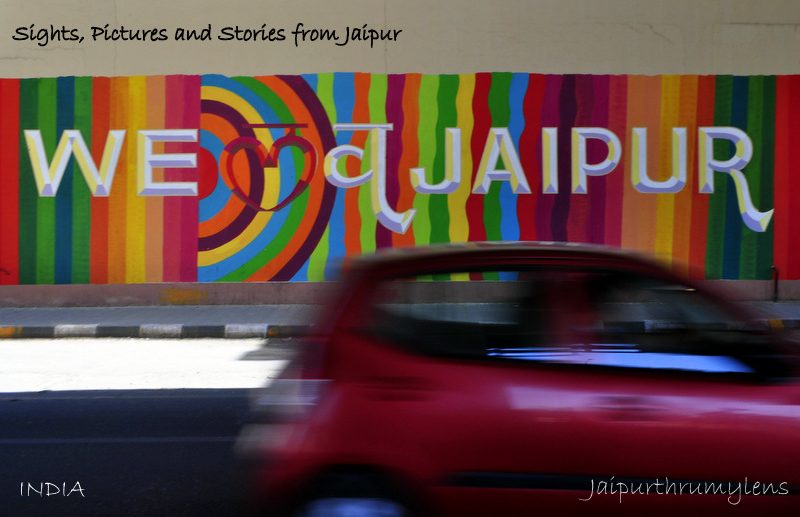

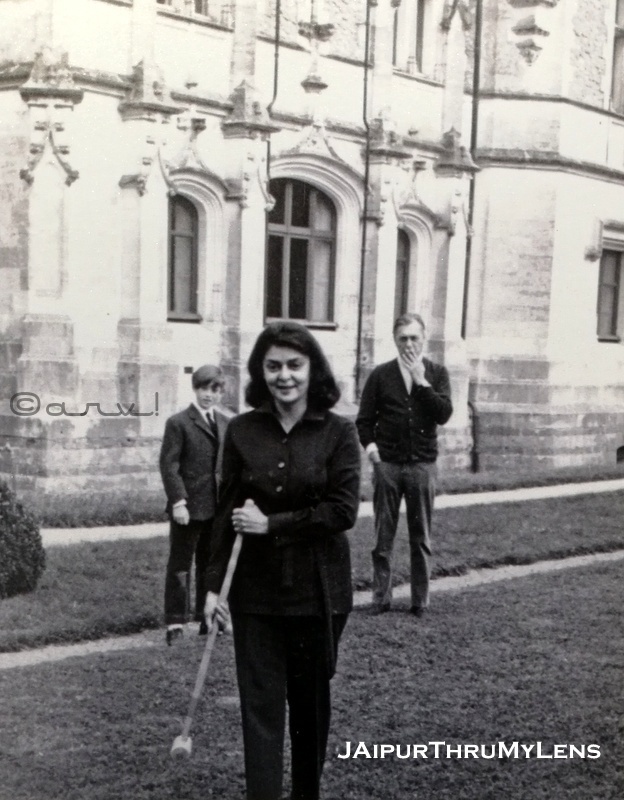

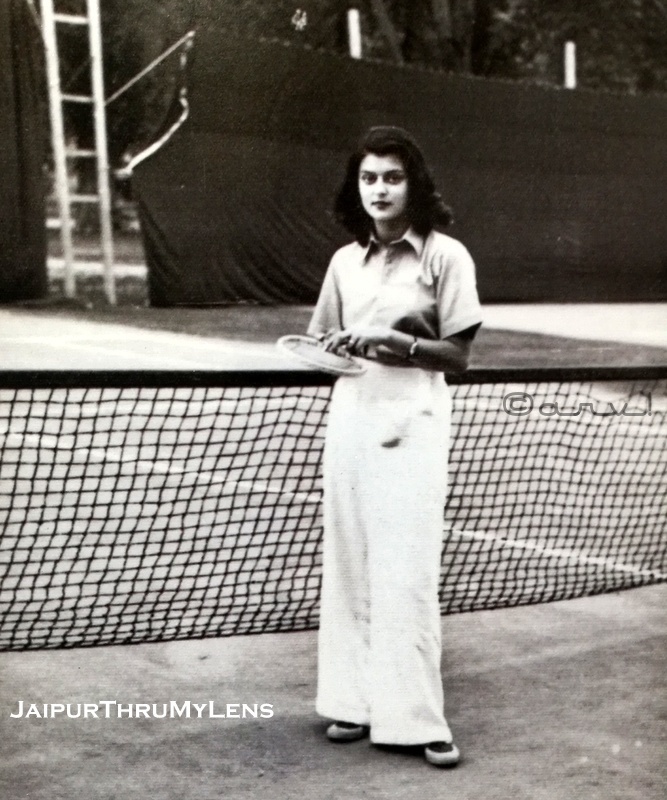
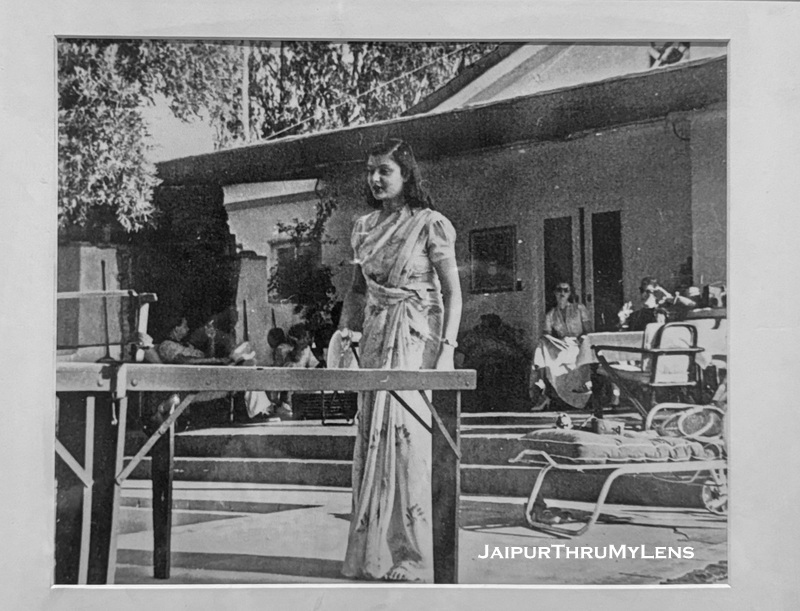
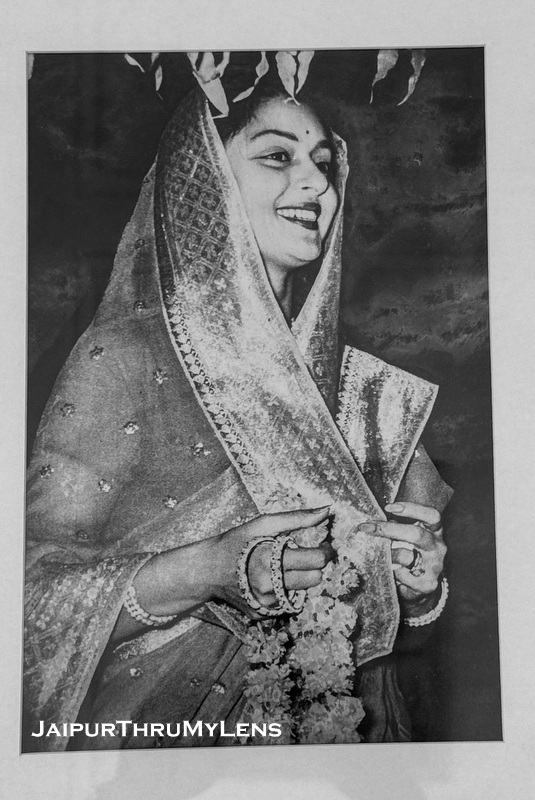
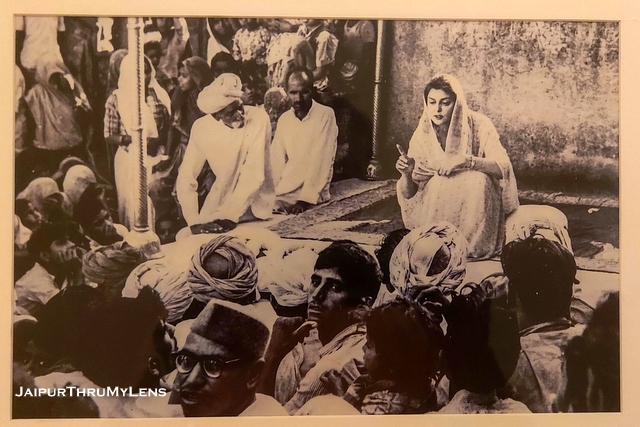
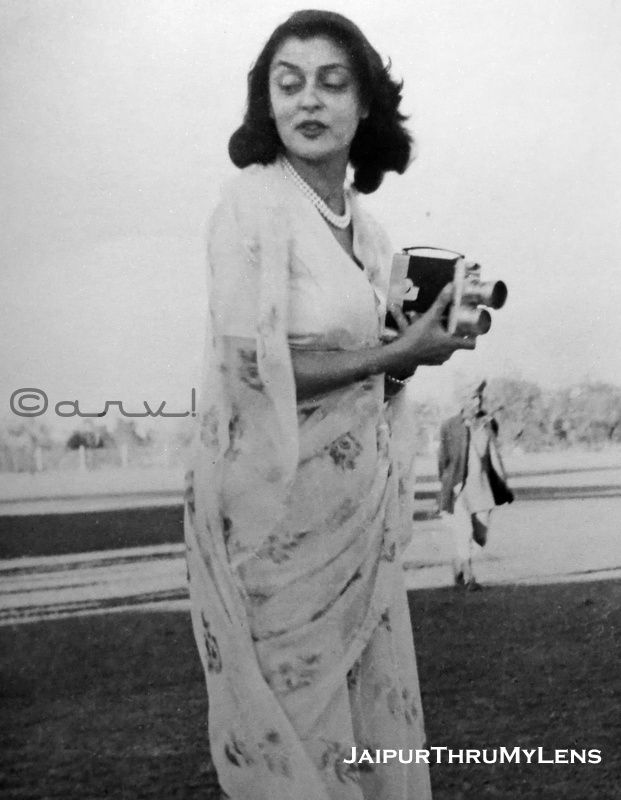
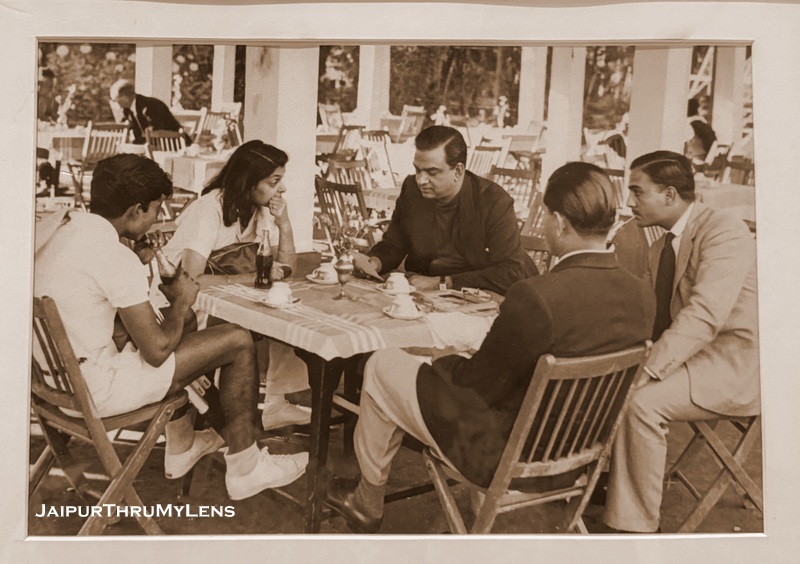

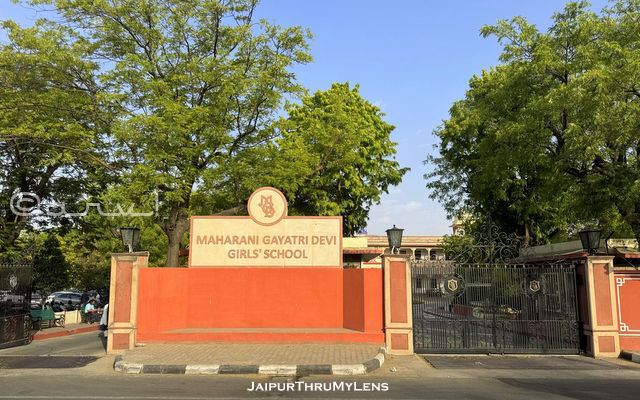
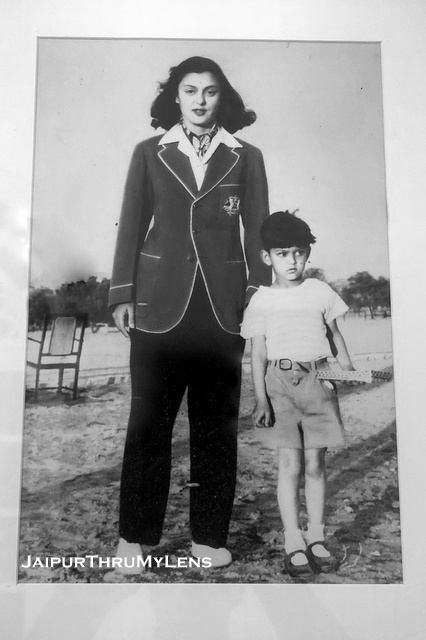


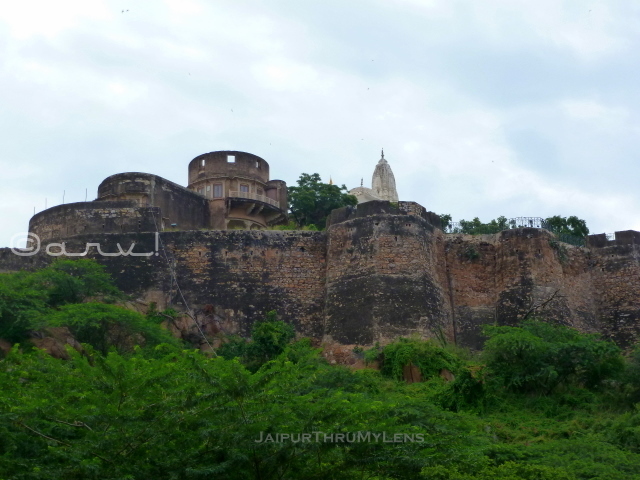
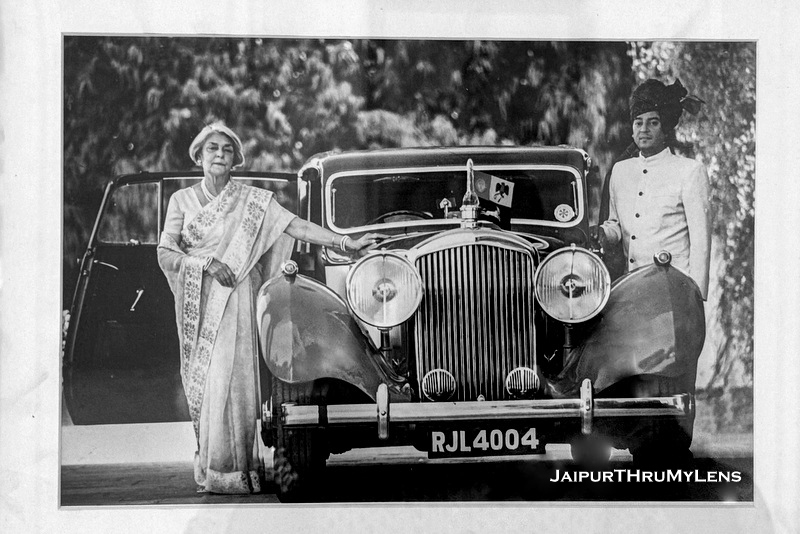
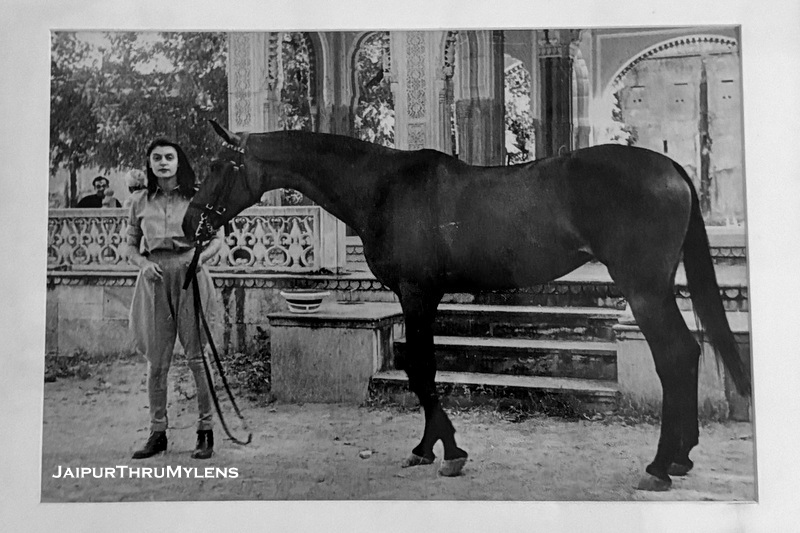
Interesting story from the past, thank you!
Many excellent photos.
Joanna
LikeLiked by 1 person
I’m glad you enjoyed this post.
LikeLike
You are welcome.
Joanna
LikeLiked by 1 person
Thanks, Joanna
LikeLike
Great historical post! Well done with illustrations!
LikeLiked by 1 person
Thank you. I’m glad you liked it
LikeLike
This post was really interesting! I learned a lot! I’ve heard of Indira Ghandi, but I’ve never heard of Maharani Gayatri Devi before! She definitely was a beauty! I love reading about different cultures and history so reading this post was definitely fun! Some of these things you don’t learn in school, so I’m happy to have come across this aticticle! Thanks for sharing!
LikeLiked by 1 person
Indira Gandhi was a politician; Gayatri Devi was the queen of Jaipur state. Definitely a popular figure but unlike Indira Gandhi. I’m glad you enjoyed this post and learnt something new. Where are you based?
LikeLiked by 1 person
I definitely learned from this post! It was a very interesting read! I live in the United States! One of the things i really enjoy about blogging is meeting people in different parts of the world! I don’t do much traveling, so this gives me way of meets new people I otherwise never would have met!
LikeLiked by 1 person
Yes, we are in different parts of the world. Excellent way to meet and interact with people. Have you ever travelled to India? Or anywhere in Asia? The US is such a big country with so many beautiful national parks. You are lucky to be able to travel and experience them.
LikeLiked by 1 person
Nope! I’ve never been to Asia! I would love to visit though! Honestly, I don’t travel much. I would like to one day. That’s why I like blogging. I get to see the world through the people I meet. What about you? Do you travel often or at all? Have you ever been to the United States?
LikeLiked by 1 person
This is not new. have been told by a few readers before; they love reading my blog because it allows seeing a different world they probably would never visit. One of them commented that she has an illness that doesn’t permit her to travel.
LikeLiked by 1 person
Oh wow! So are really helping that person with learning about different parts of the world and traveling with your posts. It’s like they’re traveling through your blog! That would make me happy!
LikeLike
Not yet. But soon, probably!
LikeLiked by 1 person
It’s definitely a big place! There would be a lot of places in the United States to visit ! Is there anywhere in paticular you would like to visit in the United States?
LikeLike
I know about her! She was the princess of one of the district Coochbehar in West Bengal. She was a famous lady with all extraordinary quality 😊 well shared ❤️
LikeLiked by 1 person
Yes, she was. Are you from W. Bengal?
LikeLiked by 1 person
Yes from Kolkata. 😊
LikeLiked by 1 person
Great! The city of joy?
LikeLiked by 1 person
https://notionpress.com/read/the-touch-of-breeze?utm_source=share_publish_email&utm_medium=whatsapp
LikeLike
Arv, this post is an excellent compilation of photographs with a lot of information on Maharani Gayatri Devi. I really enjoyed reading this post.
LikeLiked by 1 person
I’m glad you did, Sarmistha. 🙂
LikeLiked by 1 person
Impressive. Your way of presenting the story and description all are descriptive. A nice read.
LikeLiked by 1 person
I’m glad you liked it. I assume you have read more blog posts (other than this one)
LikeLiked by 1 person
Yes it was a treat to mind and memory because I am a huge fan of her. But about Jaipur, I can only say that I am an proud Jaipurite myself.
LikeLiked by 1 person
Good to know. She was definitely one of the earliest Indian celebrities to have a following across the world. How should I address you? I loved reading some of your posts on Jaipur.
LikeLiked by 1 person
Thank you for liking my posts on Jaipur. I am planning post few more in coming time but this time contemporary history. Hope you’ll give it a read too.
LikeLiked by 1 person
Sure. Is it coming any time soon?
LikeLiked by 1 person
As you know, writing history is bit time consuming, as for research and looking out for facts, it may take little time. Sorry to disappoint you.
LikeLiked by 1 person
It sure is, I know.
LikeLiked by 1 person
Thank you for this interesting post on Gayatri Devi. Was she ever on a talk show hosted by Karan Thapar? When I was very young, I remember seeing someone (from one of the royal families) like her on it – but always thought that the indivual was Madhavrao Scindia’s mother (probably not, but an error made as I couldn’t understand much!)
LikeLike
Great historical post! Well done with illustrations!
LikeLiked by 1 person
Thank you.
LikeLike